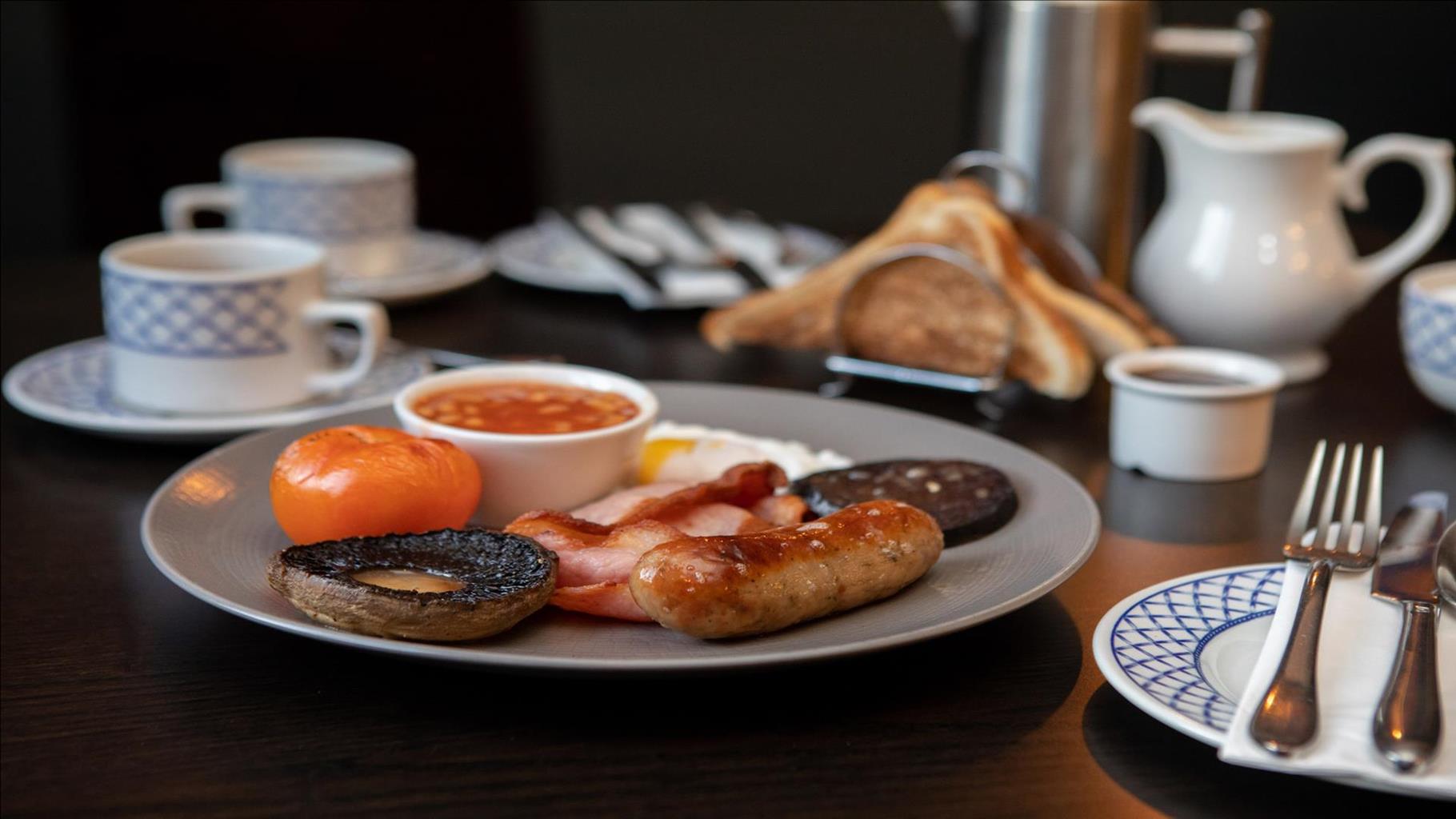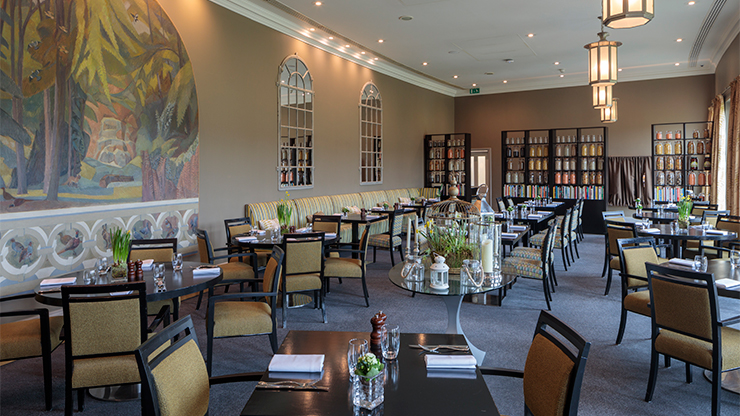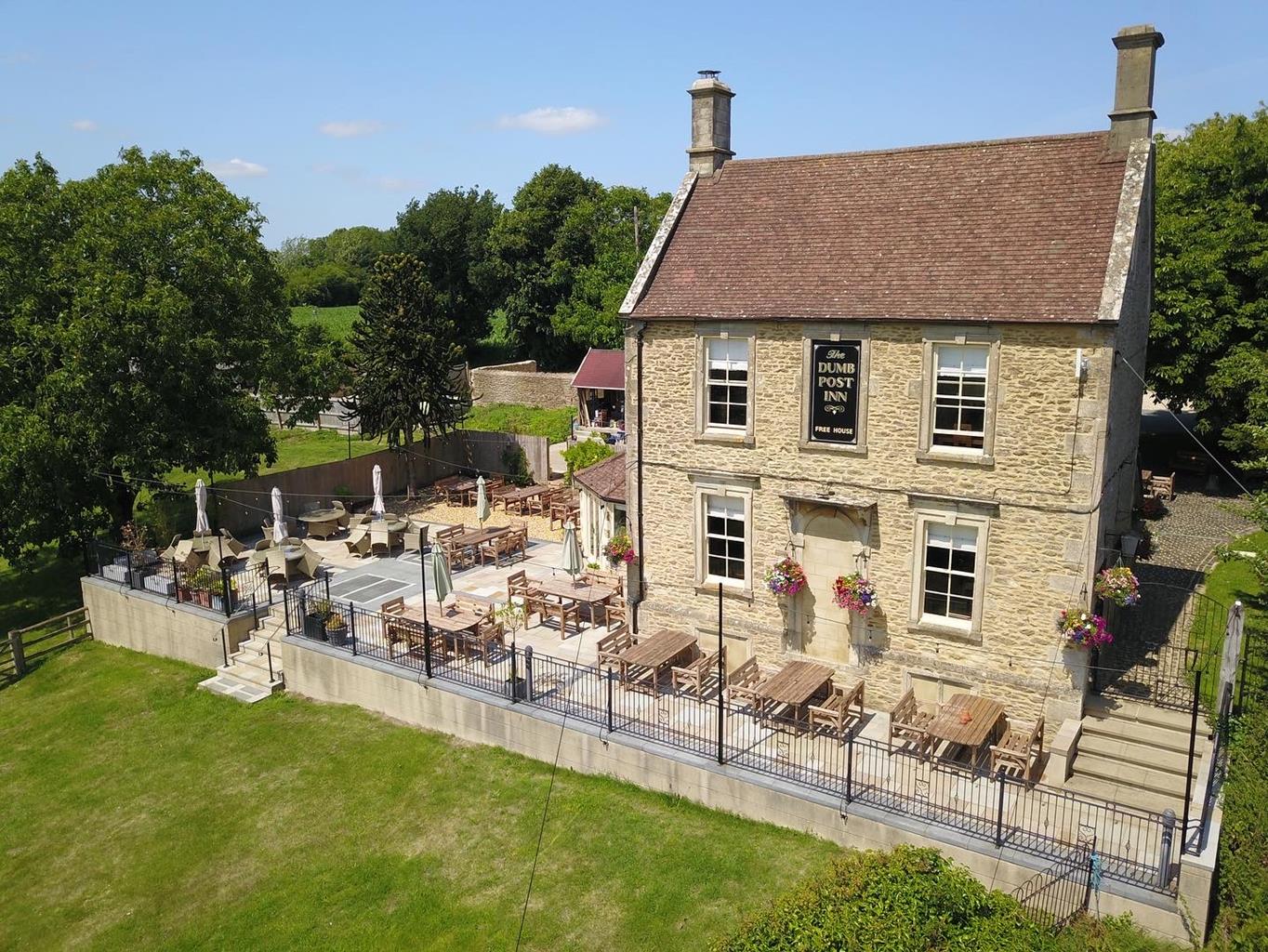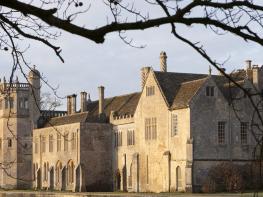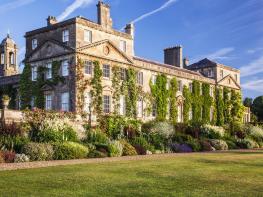This delightful 15th-century inn is located in the heart of the National Trust village of Lacock…
Around Picturesque Lacock

Combine a stroll around the medieval village with a riverside walk and a visit to Lacock Abbey, home of photographic pioneer Fox Talbot.
5.5 miles (8.8kms)
About the walk
Timeless Lacock could stand as the pattern of the perfect English village with its twisting streets, packed with attractive buildings from the 15th to 18th centuries, possessing all the character and atmosphere of old England. Half-timbering, lichen grey stone, red-brick and whitewashed façades crowd together and, above eye-level, uneven upper storeys, gabled ends and stone roofs blend with charming ease. With the founding of an abbey in the 13th century, the village grew rich on the medieval wool industry and continued to prosper as an important coaching stop between Marlborough and Bristol until the mid-18th century when, as an estate-owned village, time seemed to stand still for nearly 100 years. Owned and preserved by the National Trust since 1944, Lacock is among England’s most beautiful villages and is one of Wiltshire’s most visited. If you’re interested in architecture and plan to visit Lacock Abbey, allow the whole day to explore the village and enjoy this walk.
Of all the outstanding buildings in the village, Lacock Abbey, on the outskirts, is the most beautiful. It began as an Augustinian nunnery in 1232, but after the Reformation Sir William Sharington used the remains to build a Tudor mansion, preserving the fine cloister court, sacristy and chapter house, and adding a romantic octagonal tower, courtyard and chimney stacks. The abbey passed to the Talbot family through marriage and they Gothicised the south elevation and added the oriel windows. Surrounded by water meadows bordering the River Avon, this was the setting for the experiments of William Henry Fox Talbot (1800–77), which in 1835 led to the creation of the world’s first photographic negative. You can see some of Fox Talbot’s equipment and work in the beautifully restored 16th-century barn at the gates to the abbey.
Architectural gems to note as you wander around Lacock’s ancient streets include the timber-framed inn The Sign of the Angel, on Church Street, which retains its medieval layout, a 16th-century doorway and the passage through which horses would pass. Nearby Cruck House, with one of its cruck beams (curved timber) exposed, is a rare example of this 14th-century building method. Further along you will pass King John’s Hunting Lodge, reputed to be even older than the abbey, and St Cyriac’s Church, which contains the Renaissance tomb of Sir William Sharington. In West Street, The George Inn dates back to 1361 and features a huge open fire with a dogwheel, which was connected to the spit on the fire and turned by a dog called a Turnspit. Next door to the pub, take a quick look at the bus shelter; it was formerly the village smithy. On the corner of East Street is a magnificent 14th-century tithe barn with fine curved timbers. This was once used to store the rents that were paid to the abbey in kind, such as corn, hides and fleeces. The building later became the market hall as Lacock flourished into a thriving wool-trading centre. Finally, don’t miss the 18th-century domed lock-up next door. This is known as a ‘blind house’, since many of its overnight prisoners were drunks.
Walk directions
From the car park, cross the road and follow the path into Lacock. Turn right into East Street opposite The Red Lion and walk down to Church Street. Turn left, then keep left into West Street and go left again into High Street. Walk back down East Street.
Turn right along Church Street and turn left in front of the church to cross a bridge over the Bide Brook. Follow the path by the stream then up the lane to the end of the road.
Go through the kissing gate on your right and follow the tarmac path across the field to another kissing gate. Pass cottages to a lane, turn right, and then right again to cross the River Avon. Climb the stile on your left. Bear diagonally right across the field to a stile and cross the lane and stile opposite. Follow the path to two squeeze stiles and turn left around the field edge.
Climb the pair of stiles on your left and turn right along the field edge. Follow the path through scrub to a stile and proceed ahead to cross another stile onto a tarmac path beside the Wilts and Berks Canal. Cross a restored brick bridge, then turn left and walk along the opposite side of the canal. Cross a stile and go along the bottom edge of a field to another stile. Climb through trees and scrub to a stile, then follow the worn path ahead and along the field edge to a gate.
Cross the next field to a gate, then keep going straight ahead to cross a metalled farm drive and continue along the field edge to a gate. Ascend a grassy track to a gate and walk uphill towards a house. Before a gate, turn right across the top of the field, passing below a second house to walk all the way around the top of the field to a kissing gate on the far side. Continue ahead to a farm drive, then turn left and ascend through woodland. Carry on up the hill to a gate and continue to a lane.
Turn left, then cross the stile on the right before a house. Keep to the lefthand field edge. Cross a stile and bear diagonally left to a stile in the field corner. Go through a gateway and cross the stile ahead into woodland and continue to another stile. Proceed ahead along the field edge to a stile on your right. Bear slightly left across Bowden Park, keeping to the right of a clump of trees. Bear right, downhill along the field edge, to a stile beside a gate.
Head downhill to a stile and turn left around the field edge to a stile and gate near a house. Follow the path to the drive and follow it left. After passing between a wide gap in a hedge, bear right onto a worn path across Bewley Common to the road. Turn right and return to Lacock.
Additional information
Field paths and tracks, some road walking, many stiles
River valley, wooded hillside and parkland
Can be off lead on riverside pastures if free of cattle
OS Explorer 156 Chippenham & Bradford-on-Avon
Lacock National Trust car park off Hither Way
Adjacent to The Stables café in Lacock village
WALKING IN SAFETY
Read our tips to look after yourself and the environment when following this walk.
Find out more
Also in the area
About the area
Discover Wiltshire
A land shrouded in mystery, myth and legend, Wiltshire evokes images of ancient stone circles, white chalk horses carved into hillsides, crop circles and the forbidden, empty landscape of Salisbury Plain. To many M4 and A303 drivers heading out of London through the clutter of the Thames Valley, Wiltshire is where the landscape opens out and rural England begins.
Wiltshire’s charm lies in the beauty of its countryside. The expansive chalk landscapes of the Marlborough and Pewsey downs and Cranborne Chase inspire a sense of space and freedom, offering miles of uninterrupted views deep into Dorset, Somerset and the Cotswolds. Wiltshire’s thriving market towns and picturesque villages provide worthwhile visits and welcome diversions. Stroll through quaint timbered and thatched villages in the southern Woodford and Avon valleys and explore the historic streets of the stone villages of Lacock, Castle Combe and Sherston. Walk around Salisbury and discover architectural styles from the 13th century to the present and take time to visit the city’s elegant cathedral and fascinating museums. And if all of that isn’t enough, the county is also richly endowed with manor houses, mansions and beautiful gardens.
Nearby stays
Restaurants and Pubs
Nearby experiences
Recommended things to do
Why choose Rated Trips?
Your trusted guide to rated places across the UK
The best coverage
Discover more than 15,000 professionally rated places to stay, eat and visit from across the UK and Ireland.
Quality assured
Choose a place to stay safe in the knowledge that it has been expertly assessed by trained assessors.
Plan your next trip
Search by location or the type of place you're visiting to find your next ideal holiday experience.
Travel inspiration
Read our articles, city guides and recommended things to do for inspiration. We're here to help you explore the UK.


